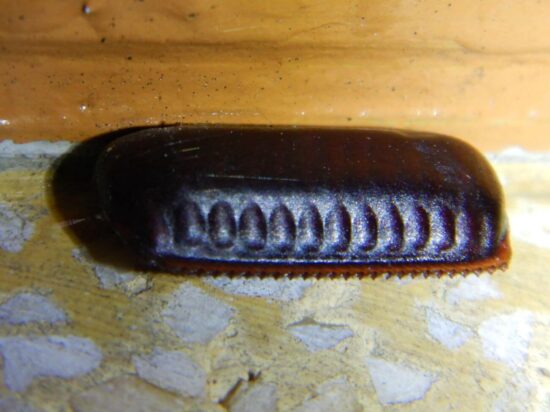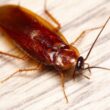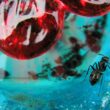Finding cockroach eggs in your home can feel overwhelming. These tiny brown cases, called oothecae, are like protective shields around dozens of baby roaches waiting to hatch. Each egg case can contain 16 to 50 eggs, and a single female German cockroach can produce up to 30,000 offspring in one year.
The challenge with learning how to kill cockroach eggs is that they’re incredibly tough. The egg case has a protein layer on the outside that becomes hard to protect the eggs from predators while they develop. This means regular sprays often don’t work on them the way they do on adult roaches.
But don’t worry. There are proven methods that work. This guide covers 12 different ways to eliminate cockroach eggs and stop future infestations before they start.
1. Physical Removal and Crushing
The most straightforward way to kill cockroach eggs is to remove and crush them by hand. You can crush the ootheca by stomping on it or squishing it, and then carefully vacuum up the pieces and dispose of it in an outdoor trash can.
Look for egg cases in dark, warm spots like behind appliances, under sinks, inside cabinets, and along baseboards. Oothecae are typically brown or reddish in color and 5-10 mm in length, depending on the species. They look like small kidney beans with ridged edges.
When you find them, put on gloves and crush each case completely. Then, take the eggs outside and throw them in the garbage can. Make sure that the disposal area is far from your house because if the ootheca hatches, the new cockroaches may find their way back.
This method works great for visible egg cases, but remember that cockroaches hide their eggs in hard to reach places. You’ll likely need to combine this with other methods for complete control.
- Starts killing roaches within hours and eliminates nests
- Lasts up to 12 months with child-resistant bait stations
- Easy to use, no mess or strong odors
- Targets roaches you see and the hidden ones too
2. Heat Treatment Application
Heat is one of the most reliable ways to kill cockroach eggs. Temperatures above 125°F (51°C) are lethal to adult cockroaches, while eggs require at least 140°F (60°C) to eradicate. Professional pest control companies use this method because it works on all life stages at once.
Heat will kill all stages of cockroaches from eggs to adults. When a structure reaches lethal temperatures they have nowhere to hide. Heat will kill the ootheca and make eggs unviable.
For DIY heat treatment, you can use your clothes dryer for infested items. Most clothes dryers heat up to 135°F, making this an effective way of killing cockroaches in your clothing. It may take several hours to kill the cockroaches at this temperature.
Professional heat treatments are more thorough. 155°F to 160°F for 90 minutes will achieve a complete kill. The process heats entire rooms or buildings to lethal temperatures, reaching places that sprays can’t touch.
3. Steam Cleaning Method
Steam cleaning provides intense heat that immediately kills cockroach eggs on contact. According to the Illinois Department of Health, steam is an effective method of killing cockroaches due to the high heat.
The key is getting the steam hot enough. Roach eggs will start to break down when exposed to temperatures above 120°F. Professional cockroach exterminators generally expose cockroaches and their eggs to temperatures between 140°F and 150°F for five to six hours.
Regular household steam cleaners might not get hot enough, but professional grade equipment can reach over 350°F. The Polti Cimex Eradicator Steamer outputs steam at up to 356°F and is commonly used by professionals as a steam treatment.
Focus your steam cleaning on cracks, crevices, behind appliances, and other areas where you’ve found egg cases. The steam penetrates into small spaces where eggs might be hiding.
4. Freezing and Cold Exposure
Cold temperatures can also kill cockroach eggs, but it takes much longer than heat. Cockroach eggs die at temperatures below 0°F (-18°C). However, cold kills cockroaches more slowly than hot temperatures.
The freezing method works best for smaller items you can fit in your freezer. You can kill cockroach eggs by freezing them at temperatures below 0°F (-18°C). However, don’t expect the eggs to die instantly. Leave them exposed to extremely low temperatures for at least three days.
Items should be left in the freezer for several days, ideally in a temperature of 0 degrees Fahrenheit or colder. After that you can vacuum out the suitcase to collect any dead cockroaches or egg cases.
In winter, you can use natural cold temperatures. Place items in a plastic bag, close it up, and put the bag in the freezer. In winter, you can set the bag outside when temperatures are near 0 degrees F. Leave the bag in the cold for 5 days.
5. Diatomaceous Earth Application
- Kills fleas, ants, roaches, and more
- Includes powder duster for easy, targeted application
- Works indoors and outdoors, long-lasting when dry
- 100% pure, food-grade, safe around pets and kids
Diatomaceous earth (DE) is a natural powder that many people use for pest control. However, when it comes to learning how to kill cockroaches eggs directly, DE has limitations. Diatomaceous earth works on adult roaches and nymphs but does not affect eggs due to the protective ootheca.
The good news is that DE works great on baby roaches right after they hatch. Diatomaceous earth doesn’t kill roach eggs but it will kill the nymphs as soon as they hatch. The powder damages their outer shell and dries them out.
Apply diatomaceous earth to baseboards, crevices, wall voids, and under sinks. For best results, the dust should be applied as a fine deposit barely visible to the naked eye.
Make sure to use food grade diatomaceous earth for safety. The powder needs to stay dry to work properly, so avoid using it in very humid areas where it might clump together.
6. Boric Acid Treatment
Like diatomaceous earth, boric acid doesn’t kill eggs directly but targets the nymphs after hatching. Boric acid is a potent agent against adult cockroaches, targeting their digestive and nervous systems. However, it does not get rid of roach eggs.
But here’s why it’s still effective: Although boric acid does not destroy the eggs immediately, it will quickly kill any nymphs that hatch and can remain effective for years as long as it remains dry.
For best results, the dust should be applied as a fine deposit barely visible to the naked eye. Cockroaches tend to avoid heavy accumulations of the powder. Apply it around areas where you’ve found egg cases.
You can also make boric acid baits by mixing it with attractants. To mix boric acid with sugar, combine 1 teaspoon of boric acid with 2 tablespoons of sugar. You can also mix boric acid with flour at a 50/50 ratio.
Always keep boric acid away from children and pets, and never apply it on food preparation surfaces.
7. Insect Growth Regulators (IGRs)
IGRs are special chemicals that mess with insect development. They’re one of the few treatments that can actually affect cockroach eggs. IGRs also can affect insects that are exposed later, in the adult stage, by blocking the development of viable eggs. Eggs that are exposed to IGRs may not hatch.
Female cockroaches exposed to IGRs produce sterile ootheca, which is the key element in breaking the breeding cycle. This means the eggs won’t develop properly even if they’re already laid.
Popular IGR products include those containing hydroprene, methoprene, and pyriproxyfen. Gentrol Point Source contains the active ingredient hydroprene and targets the larvae and the eggs in the treated area.
IGRs work slowly but effectively. You are not killing individual insects, just preventing future populations. If you use an IGR alone, it will take months to achieve control. That’s why they’re often combined with other treatments that kill adult roaches immediately.
8. Residual Pesticide Sprays
Professional grade pesticide sprays can penetrate egg cases and kill the developing embryos inside. You can douse egg cases with residual pesticides in the form of sprays or aerosols, which will kill the embryos. Follow all label directions.
These aren’t the same as regular bug sprays you buy at the store. Residual pesticides are designed to remain active for weeks or months after application. They continue working even after they dry.
The key is thorough coverage of areas where cockroaches lay their eggs. Focus on cracks, crevices, behind appliances, and other dark, warm spots. The pesticide needs to come into direct contact with the egg cases to be effective.
Always read and follow label directions carefully. Many of these products require protective equipment and proper ventilation during application.
9. Professional Fumigation
For severe infestations, fumigation might be the only way to reach all the hidden egg cases throughout a building. Professional roach extermination services provide reliable long-term solutions. Fumigation is effective for severe infestations.
Fumigation fills an entire structure with pesticide gas that penetrates every crack and crevice. This reaches egg cases that other methods might miss. The process requires sealing the building and temporarily evacuating all people and pets.
Professional pest control companies have the training and equipment to do this safely. They can also determine if fumigation is really necessary or if other methods might work for your situation.
The cost is higher than DIY methods, but fumigation can eliminate entire populations of cockroaches at all life stages in one treatment.
10. Vacuum Removal Technique
Vacuuming can remove visible egg cases, but there’s an important trick to make it work properly. You cannot just vacuum them and expect that to destroy the eggs, because they have an extremely hard casing that protects them, called the ootheca capsule, so you need to crush them before using a vacuum on them.
The vacuum process should go like this: first crush the egg cases completely, then vacuum up all the pieces. Vacuuming is very effective in removing cockroaches and egg cases when combined with other methods. Use vacuums with a high efficiency particulate air (HEPA) filter.
According to one former entomologist, not only can cockroaches continue to live within a vacuum, but the eggs of a female cockroach can also survive and develop into adults before escaping a vacuum cleaner bag. That’s why crushing first is so important.
After vacuuming, dispose of the bag immediately in an outdoor trash can. For bagless vacuums, empty the canister outside and clean it thoroughly.
11. Sanitation and Habitat Modification
Creating an environment where cockroach eggs can’t survive is just as important as killing existing ones. Understanding how to kill cockroaches’ eggs also means preventing new ones from being laid in the first place.
Remove sources of moisture since cockroach eggs need humidity to develop properly. Fix leaky pipes, eliminate standing water, and use dehumidifiers in damp areas like basements.
Remove corrugated cardboard boxes, newspapers, bags and other unnecessary clutter. When storing items, leave space between packages. Use caulk to seal spaces and cracks where cockroaches hide.
Clean up food sources that attract egg laying females. Store food in sealed containers, clean up crumbs immediately, and don’t leave dirty dishes sitting out overnight.
Regular cleaning also helps you spot new egg cases before they hatch. The sooner you find them, the easier they are to eliminate.
12. Targeted Female Elimination
The best way to prevent cockroach eggs is to stop females from laying them in the first place. Kill the female so no egg cases are made. The easiest way to do that is by buying cockroach baits which should be enough to get rid of most infestations.
Female cockroaches carrying egg cases often behave differently than other roaches. Female cockroaches do not feed for the three weeks they carry their egg case. Exposure to an IGR can cause them to drop their egg case and start feeding again, thus speeding up bait performance.
Place gel baits in areas where you’ve seen cockroach activity, especially in kitchens and bathrooms near food and water sources. The females will take the poisoned bait back to their hiding spots and share it with other roaches.
Another way to prevent cockroach eggs is by buying insecticides that will actually disable female roaches from producing eggs in the first place, like insect growth regulators.
Monitor your progress with sticky traps placed along walls and in corners where cockroaches travel. Fewer females caught over time means your elimination efforts are working.
The Best Approach: Combining Multiple Methods
Learning how to kill cockroach eggs effectively usually requires using several methods together. Each technique has strengths and weaknesses, but combining them creates a complete control program.
Start with sanitation and habitat modification to make your home less attractive to cockroaches. Then use physical removal to eliminate any visible egg cases you can find.
For ongoing control, apply residual treatments like boric acid or diatomaceous earth around areas where cockroaches are active. Add IGRs to prevent successful reproduction, and use baits to eliminate the adult population.
Heat treatment or professional fumigation might be necessary for severe infestations where other methods aren’t reaching all the hidden egg cases.
Remember that cockroach control takes time and patience. German cockroaches have a higher egg production rate than most other cockroach species. A single female German cockroach and her offspring can produce up to 30,000 new cockroaches each year. But with the right combination of methods, you can break this cycle and keep your home roach free.
The key is persistence and using multiple approaches together. No single method works perfectly on its own, but combining several techniques gives you the best chance of eliminating both the current infestation and preventing future problems.




